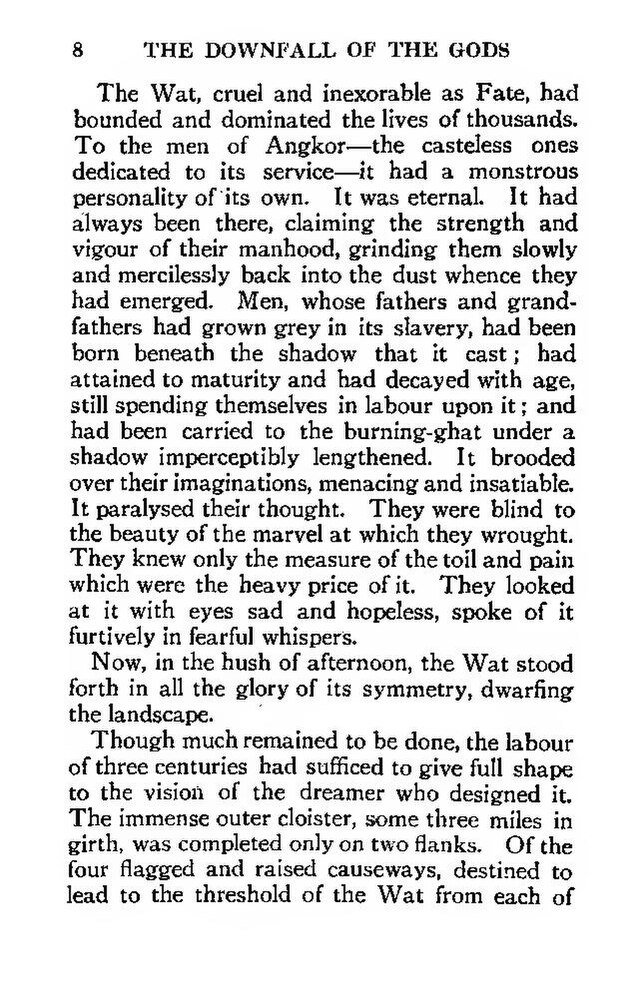The Wat, cruel and inexorable as Fate, had bounded and dominated the lives of thousands. To the men of Angkor—the casteless ones dedicated to its service—it had a monstrous personality of its own. It was eternal. It had always been there, claiming the strength and vigour of their manhood, grinding them slowly and mercilessly back into the dust whence they had emerged. Men, whose fathers and grandfathers had grown grey in its slavery, had been born beneath the shadow that it cast; had attained to maturity and had decayed with age, still spending themselves in labour upon it; and had been carried to the burning-ghat under a shadow imperceptibly lengthened. It brooded over their imaginations, menacing and insatiable. It paralysed their thought. They were blind to the beauty of the marvel at which they wrought. They knew only the measure of the toil and pain which were the heavy price of it. They looked at it with eyes sad and hopeless, spoke of it furtively in fearful whispers.
Now, in the hush of afternoon, the Wat stood forth in all the glory of its symmetry, dwarfing the landscape.
Though much remained to be done, the labour of three centuries had sufficed to give full shape to the vision of the dreamer who designed it. The immense outer cloister, some three miles in girth, was completed only on two flanks. Of the four flagged and raised causeways, destined to lead to the threshold of the Wat from each of
